
 THE MYSTERY OF TERROIR
THE MYSTERY OF TERROIR
Terroir. It’s kind of a mystery. And not well understood by most. And that’s because…
magical harp music here, taking us far back into the Land of Discovery…
Because…the word terroir has no exact English equivalent. And, like many French words we must first learn to pronounce it. Find your beret once again, put it on your head at a jaunty angle and say (this is my own spelling here) “tare WAHr.” If you can get the guttural in there, the more power to you.
In order to define this term, I looked all over for a concise explanation but ran into more and more details to add. So this isn’t quite concise, but rather a rambling ribbon of all I have learned and will share with you.
A TRANSLATION
While the actual word terroir, translated, means land (terre) or earth, it has come to mean so much more. Wikipedia defines it as “the set of all environmental factors that affect the crop’s phenotype, including unique environment contexts, farming practices and a crop’s specific growth habitat. Collectively, these contextual characteristics are said to have a character; terroir refers to this character.“ Or, you might say, “specificity of place.”
Hmmm. Let’s explore what that means.
ASPECT 1: CLIMATE
First let’s talk about a really big factor. Climate. Meaning the overall climate that would be good for grapes that like that kind of climate. And there might be microclimates within that region that could be a little different for reasons of, say, a hill behind the vineyard creating a shadow, or a low spot that stays cooler longer, or a more exposed hot spot. And then there’s the day to day weather. Unusually warm? Coolish? Breezy? Rainy? Foggy? This has even more effect on a crop of grapes for a particular vintage.
ASPECT 2: SOIL and MICROBES
Then there’s soil. The actual earth where a vine is planted makes a difference. Clay? Sand? Stony? Granite or schist? Some of these have slow drainage, some fast. All of these will affect how a vine grows thereby affecting the quality of the grapes. And here I might mention something interesting. One might think that the “earthy” flavors or the “mineral” characteristics of the wine might come from the type of soil where the vine is grown, but it is not clear scientifically if that is the case. There are differing opinions on this matter, but almost all of the flavors in wine comes from the action of yeasts on flavor precursors during fermentation. There’s also a new-ish study (2013) that’s very interesting. It posits that microbes, like particular bacteria and fungi, tell us a lot more about wine than we ever thought. Scientists at UC Davis have been studying microbes in vineyard sites and in wines. They’ve been able to prove a clear existence of a unique biogeographic fingerprint based on the types and amounts of fungi and bacteria present in grape must (mashed up grapes). This means that every wine has unique biological indicators of where it’s from and even what year it is made. While the study hasn’t yet connected how these microbial differences may link to sensory qualities i.e. how the wine tastes, they will continue to experiment looking for correlations. Before the study, experts thought that soil type was the defining feature to why wines have so much regional variation. However, much of the research to support this theory has shown many dead ends. This study opens up a new realm of possibilities that may help explain terroir in wine.
ASPECT 3: LOCATION
Next we have to consider the actual terrain where the vineyards are located. This includes altitude, aspect (how the sun hits a slope), any other geological features like mountains, valleys, being inland or next to a body of water. These things will all affect how a wine from a particular region tastes.
Then there is the human element and tradition. Even though tradition is a human interaction, ancient winemaking methods tend to be highly dependent on the region’s climate, soil and terrain. Terroir is not a taste per se found in wine. It results in the different tastes of each wine from the complex microbiology of fermentation and the process of developing that wine made from grapes of a particular place. A winemaker needs great skill to know when to be hands off and when to intervene in a wine’s progress. It is a partnership with winemaking. Thus the culture of place is also integrated in the wine of that place.
WORLDLY DIFFERENCE?
There’s a dispute going on about old world wines exhibiting more terroir than new world wines. New world wines can be heavy handed, too jammy, too much new oak, overriding the sense of place and history from where the grapes were born. This does not have to be so. And it is not always the case. A glass of wine is not a simple thing and the best wines speak their truth. But they say terroir speaks in a quiet voice. We just need to listen.
HUMANISTIC TERROIR
As I sit and ponder this terroir information, it occurs to me that it can also apply to each of us as human beings. I think of that woman who wears so much make up that I can’t really see her face. Or that verbose and overbearing man who has so much to say you wonder what he’s hiding. Or that person you instantly see as sincere and present and truthful. Perhaps you regard that old man or woman with all those wrinkles and a face full of history. Do we all show our terroir? What can’t be seen? What is felt or perhaps just hinted at? Can we be other than we are? Are we an honest glass of wine? Are we a good glass of wine?
TRY IT OUT
And So. I want to recommend you do something. We at Northwest cellars have an unusual wine situation that I think is really interesting. We have two 100% Carménères, both 2015’s made by the same winemaker. But they are made from vineyards about eight miles apart, one from Red Mountain and one from Horse Heaven Hills. What a great chance to taste terroir in action right here! I highly recommend you do this to really drive home what this whole article is about. You can explore our wine collection here.
One other thing, the first of my new wines of the year (remember my New Year’s resolution?) was a French Chablis (Chardonnay from Burgundy). Oh my, I think the Northwest Cellars Chardonnay is very similar! French Chablis traditionally does not use oak with chardonnay. And the current chardonnay at NW Cellars has very little oak on it, thereby letting the natural flavors of the grape shine through. They both exhibit clean bright flavors with a nice minerality and some creaminess. Both are good examples of terrific terroir!
Bottoms up!
~ Peggy






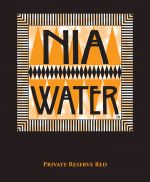

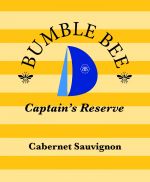
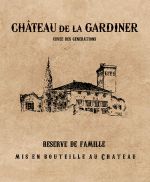
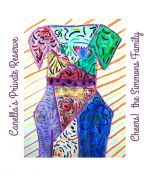
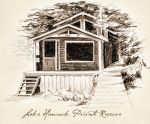
0 Comments